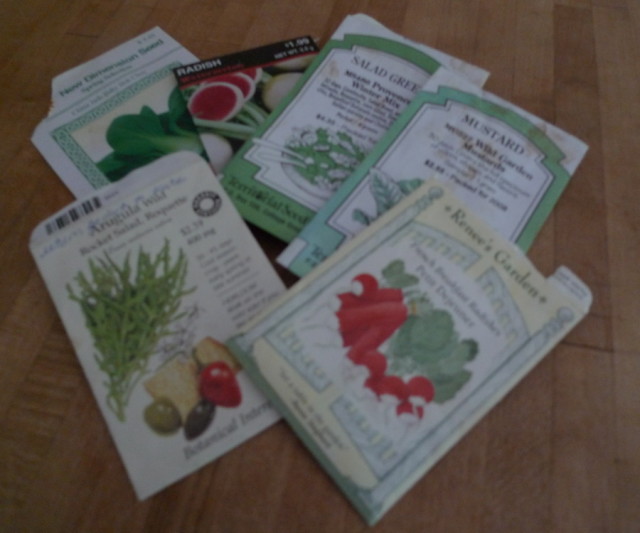Sow Late Summer Vegetables

I have a hot date with some seed packets this weekend
Still have room in your garden to plant something new? Now is a great time to plant quick-growing late summer and autumn/winter crops.
Radishes and beets can be direct-sown in the ground to liven up late summer or early fall meals. Greens are wonderful to sow at this time of year: almost any leafy green can be grown either for mature leaves or snipped regularly for a cut-and-come-again harvest. Those that head up or do well in cooler weather – radicchio, chicories, endive, escarole, chard, etc – are left to grow until they have built up bulk to get them through the first frosts.
- Lettuce
- Spinach
- Arugula
- Kale
- Chard
- Baby bok choi
- Mustard
- Chicory
- Endive
- Escarole
- Cilantro
- Green onions
- Radish
- Beets
Look for quicker-growing varieties of the above listed seeds. Also, keep an eye out for seeds described as good for fall or winter.
The most important factor in the success of August plantings is stay on top of the watering. If you’re really busy and might not be out to water daily during the first couple of weeks after planting, try using shade cloth. Just set up your shadecloth tent over the surface of the soil to keep the sun from baking the soil dry too quickly and protect young seedlings. Gradually remove the shadecloth from the plants (choose an overcast day, or start by removing the shadecloth in the mornings to acclimate seedlings). Before long, they’ll be growing at top speed. You can also sow greens in flats and transplant them into the garden once their first set of leaves has appeared.
If you want to get all scientific about sowing seeds for summer and fall harvest, here are some tips: the first frost date in the Portland metro area is approximately October 15th. There are about 56 days between this weekend and the first frost. Check the seed packet for the seed variety’s "days to maturity," add about two weeks onto that date (to compensate for waning light levels in autumn) and make sure you’re sowing quicker-growing varieties that will be ready before the first frosts… or that are cold-hardy enough to take a bit of frost. If in doubt, look into some season-extending devices from Gardeners Supply Company, Territorial Seed Company or your favorite local retail nursery.
